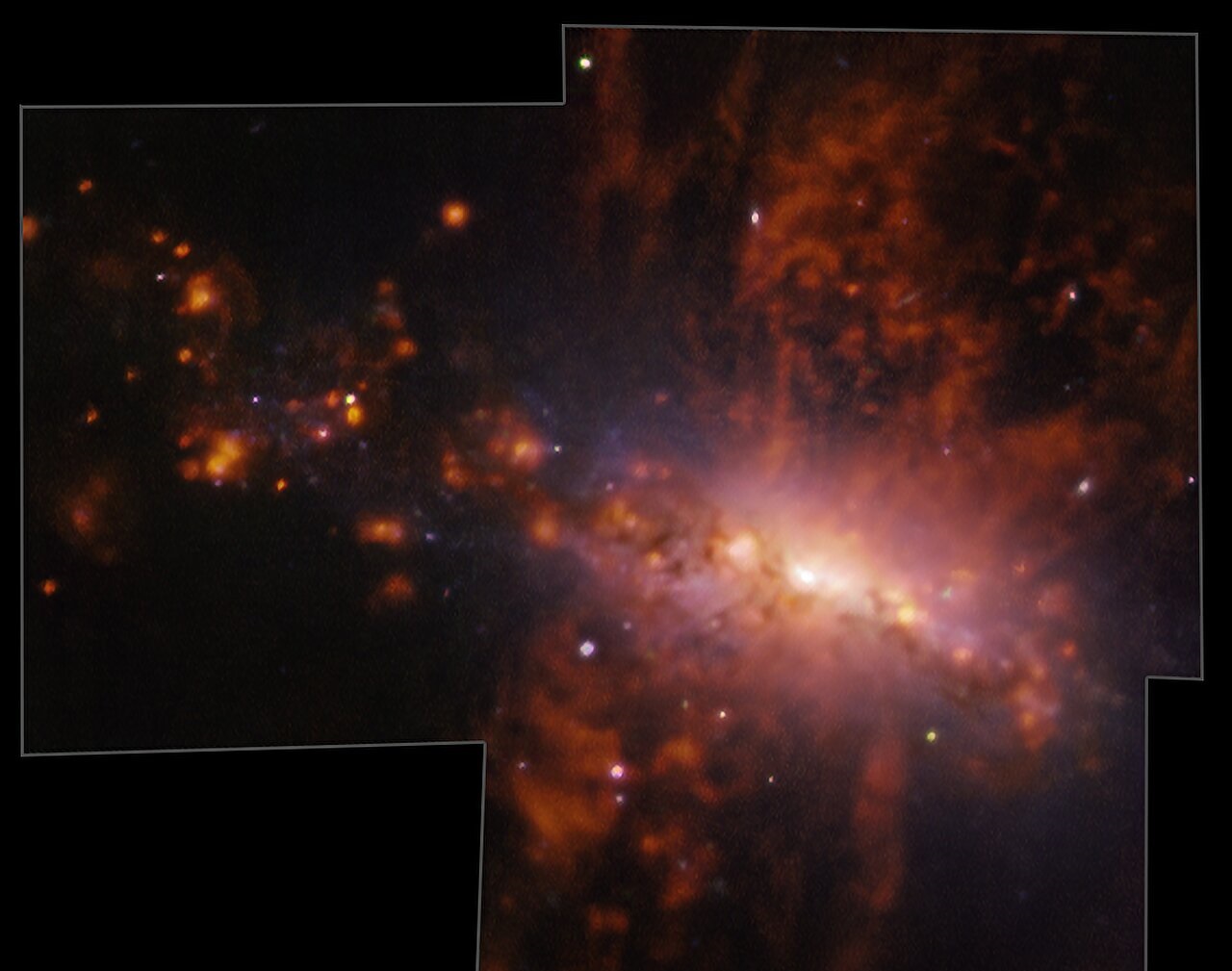Scientists are exploring the galaxy NGC 4383 in the nearby Virgo cluster. Giant explosions occur there, filling interstellar space with dust. Researchers believe that this helps to maintain a constant rate of star formation in it for billions of years.

Giant explosions in a distant galaxy
A team of international researchers studied the galaxy NGC 4383, located in the neighboring Virgo cluster, and discovered a gas leak so large that it would take 20,000 years for light to travel from one edge to the other.
Lead author Dr. Adam Watts from the University of Western Australia at the International Center for Radio Astronomy Research (ICRAR) said its source was giant explosions in the central regions of the galaxy, which could eject huge amounts of hydrogen and heavier elements. The mass of the ejected gas is equivalent to more than 50 million suns.
Scientists still know little about the physics of such sources and their properties, since they are very difficult to detect. The emitted gas is quite rich in heavy elements, which gives us a unique insight into the complex process of mixing hydrogen and metals in the escaping gas. “In this particular case, we detected oxygen, nitrogen, sulfur and many other chemical elements,” says Dr. Watts.
Interstellar gas and star formation in galaxies
Gas emissions are crucial to regulating how fast and for how long galaxies can continue to form stars. The gas emitted by giant explosions fills the space between the stars inside the galaxy, and even between galaxies, and can float in the intergalactic environment forever.
The high-resolution map was created based on data from the MAUVE study led by ICRAR researchers Professors Barbara Catinella and Luca Cortese, who were also co-authors of the study.
The study used the MUSE Integral Field Spectrograph on the Very Large Telescope of the European Southern Observatory, located in northern Chile. This instrument has repeatedly allowed scientists to explore complex processes in the depths of space.
“We designed MAUVE to investigate how physical processes such as gas outflows help stop star formation in galaxies,” says Professor Catinella. “NGC 4383 was our first target, as we suspected something very interesting was happening, but the data exceeded all our expectations. We hope that in the future, MAUVE observations reveal the importance of gas outflows in the local universe with exquisite detail.”
According to phys.org
Follow us on Twitter to get the most interesting space news in time
https://twitter.com/ust_magazine


